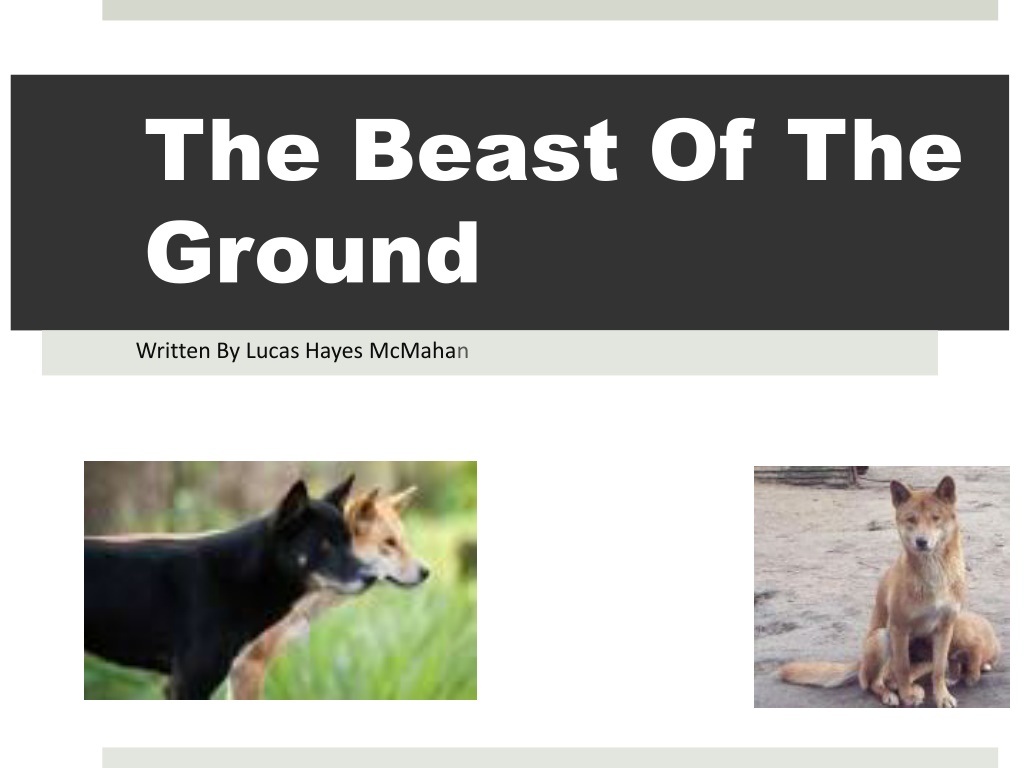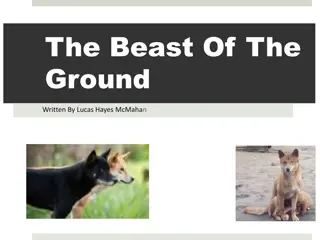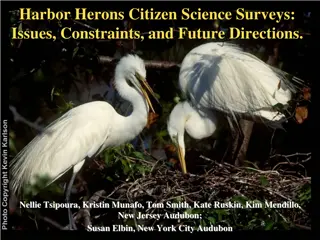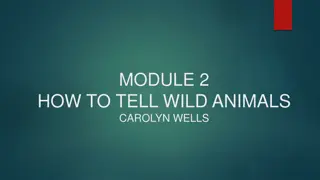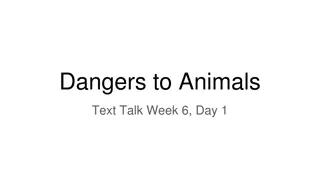Learn About the Fascinating Dingo in the Wild Habitat
In this report, you will discover the unique characteristics, diet, enemies, and survival tactics of the Dingo, the apex predator in Australia's ecosystems. Explore how Dingoes protect themselves and mimic wolf and dog sounds to deceive their prey. Uncover the challenges they face from humans, crocodiles, and farmers in their environment.
Download Presentation

Please find below an Image/Link to download the presentation.
The content on the website is provided AS IS for your information and personal use only. It may not be sold, licensed, or shared on other websites without obtaining consent from the author.If you encounter any issues during the download, it is possible that the publisher has removed the file from their server.
You are allowed to download the files provided on this website for personal or commercial use, subject to the condition that they are used lawfully. All files are the property of their respective owners.
The content on the website is provided AS IS for your information and personal use only. It may not be sold, licensed, or shared on other websites without obtaining consent from the author.
E N D
Presentation Transcript
The Beast Of The Ground Written By Lucas Hayes McMahan
In this report you are going to learn so much about the dingo. We re going to discuss how to recognize the Dingo in its natural habitat, what it eats, how it moves, what noises it makes, predators, and prey, and survival adaptations Let s get started!!!!!!!.Make sure you are paying good attention.
My animal looks like My animal looks like, tan, black, brown, grey, red, yellow. These are some of many coolers that Dingo s look like. It can grow 125cm, that s 49in. The dingo can way up to 20kg, that is 44lbs.It has pricked ears and a long bushy tail. It is the biggest land predator on Australian. The dingo is considered to bi an apex praetor and therefore plays a vital role in the different ecosystems that occur across the continent. It is related to the wolf and the domestic dog. The have two long teeth for ripping meat apart to eat the meat in chucks. Two big pointy ears with black fur in them. Some of the dingoes are black like the one on the front cover of the PowerPoint. Due to the large size and dominant nature of the dingo, the dingo has no real predators within its natural environment besides humans who are responsible for the destruction of the dingo s habitat, and the odd crocodile.
My animal eats Rabbits, Lizards, Rodents, Birds, Wallabies, Calves, Sheep, and Occasional kangaroo, and small mammals. The dingo is a carnivore which means that the dingo eats meat. The dingo s mane prey is the Rabbit. This is the most desisting thing ever. The dingo eats raw meat. Isn t that rilly grose.
The dingos enemies are The dingo s enemies are humans, large reptiles, crocodile, and farmers. The farmers are trying to kill or capture the dingo. Dingo s must be careful for the famers and other kind of animals trying to eat it. Sounds of the crocodile
How A Dingo Protects Itself? The Dingo can run up to 30 miles per hour. They hunt at night so the are nocturnal. It also hunts in the day. It can run up to 48Km/h (30 mph). It hunts in a pack of 2-10 dingoes in each pack. The dingo howls like a wolf so the enemies think it is a wolf. The pry may not care because it is not a pry of the wolf. The dingo also sounds like a dog so maybe likes to eat dogs, so the pry will come right to
My animal makes noise like The dingo howls like wolfs and it barks like a dog. They will mimic a dogs and a wolfs howl. So the pry will come to the dog bark so the pry will think it is a dog. They will also do a wolf howl so the pry will think the dingo is a wolf so if they like to eat the wolf so they will come to the wolf howl. Dingo howls Like a wolf. Dingo barks Like a dog.
Conclusion Thank you so much for reading about the dingo. I hope you now understand how a dingo looks like, What the dingo eats, How the dingo moves, What noise the dingo makes, And how the dingo protects its self. Can you tell me five things about the dingo that you didn t know before??
Bibliography A-Zanimals.com World Book Online Encyclopedia
